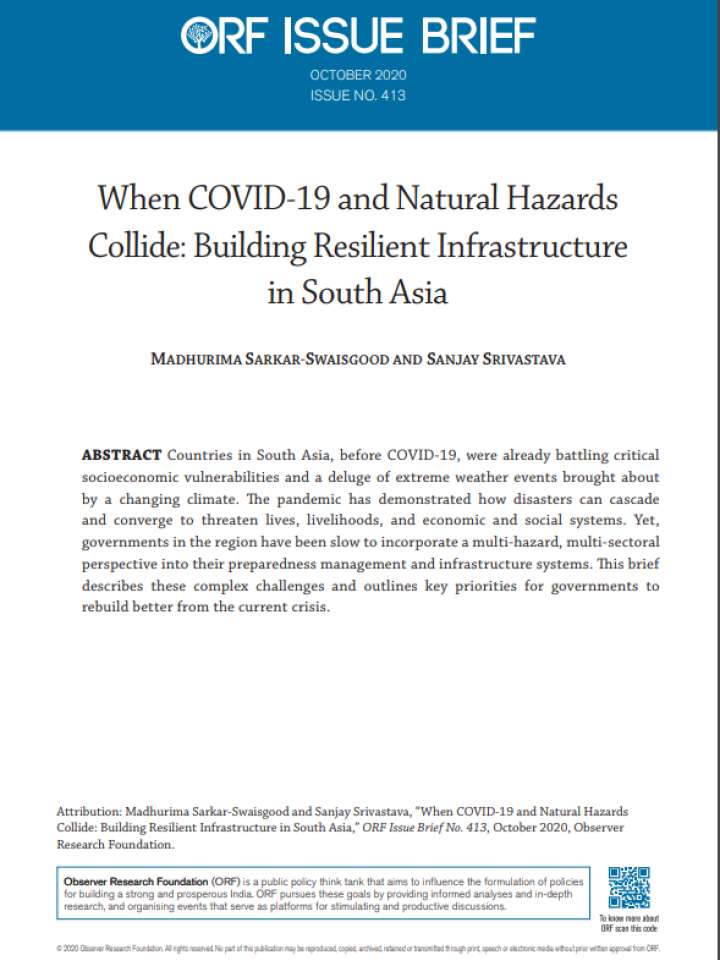When Covid-19 and natural hazards collide: Building resilient infrastructure in South Asia
This brief describes the complex challenges faced by South Asian countries and outlines key priorities for governments to rebuild better from the current pandemic crisis. Countries in South Asia, before COVID-19, were already battling critical socioeconomic vulnerabilities and a deluge of extreme weather events brought about by a changing climate. The pandemic has demonstrated how disasters can cascade and converge to threaten lives, livelihoods, and economic and social systems. Yet, governments in the region have been slow to incorporate a multi-hazard, multi-sectoral perspective into their preparedness management and infrastructure systems.
The brief offers three pivotal solutions towards risk-resilient infrastructure:
- mainstreaming hazard and climate risk data and analytics into mainstream financing
- expanding focus from single hazard to multiple hazards for disaster risk financing
- and using regional cooperation to share expertise in building infrastructure resilience through better early warning systems and overall disaster risk reduction
The recovery process from the current cascading disasters provide an opportunity for integrating isolated systems of disaster, health, infrastructure, and financing sectors. If the South Asian region adequately internalises and operationalises the lessons from the current crisis, there are tools available that can support better infrastructure management to benefit all communities.
Explore further
